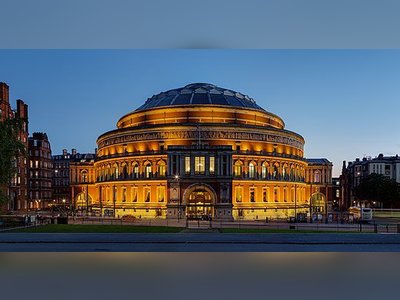British Heritage
Remember, Cherish, Learn.
beta
Royal Liver Building
The Royal Liver Building: A Pinnacle of British Architectural Heritage.
Defining the Skyline of Liverpool: The Royal Liver Building
Established as one of the most recognisable edifices in the United Kingdom, the Royal Liver Building has persistently defined Liverpool's skyline for over a century. This imposing structure, standing guard at the Pier Head, creates a rich visual fabric with its neighbouring structures, the Cunard Building and the Port of Liverpool Building. Collectively referred to as the 'Three Graces', these edifices line the city's waterfront, their grandeur mirroring the legacy of Liverpool's historic maritime mercantile era, which earned them a place in UNESCO's World Heritage list.
Completed in 1911, the Royal Liver Building was commissioned by the Royal Liver Assurance group, a company founded in Liverpool in 1850 to provide locals with financial support in the event of a wage-earning family member's death. One of the pioneering buildings to use reinforced concrete globally, the building stands at an impressive height of 98.2 meters up to the top of the spires, and 50.9 meters to the main roof. While it may no longer hold its original title as one of the tallest buildings in the country, its importance is undiminished, remaining the joint-fifth tallest structure in the city of Liverpool.
Marking the city's identity, the Royal Liver Building is adorned with two mythical Liver Birds, watching over the city and the sea. The legend surrounding these fabled creatures has it that, should they ever take flight, Liverpool would cease to exist.
The Genesis of a Landmark
The establishment of the Royal Liver Building stemmed from the growth of the Royal Liver Group, which, in 1907, had an expanding workforce of over 6,000 employees. Recognising the need for a larger premise, the company greenlighted the construction of a new head office. Walter Aubrey Thomas, the architect behind this visionary project, had the foundation stone laid on 11 May 1908, and by 19 July 1911, the building was officially opened by Lord Sheffield. Despite the scepticism surrounding its groundbreaking design and use of reinforced concrete, the building stood as a testament to Thomas's architectural prowess.
During the 1950s, the Royal Liver Building housed No 3 Movements Unit (Embarkation) of the Royal Air Force, responsible for overseeing the movement of RAF personnel and goods through the port. The building was further enhanced in 1953 when electronic chimes were installed as a memorial to the members of the Royal Liver Friendly Society who died in the World Wars. The clock dials are also illuminated during the hours of darkness, providing a beacon in the city's nightscape.
The Royal Liver Building maintained its status as the head office for Royal Liver Assurance until its merger with Royal London Group in 2011. In a significant milestone in its history, the building was put up for sale for the first time in October 2016. It was subsequently purchased by Luxembourg-based Corestate Capital, along with Everton F.C.'s majority shareholder Farhad Moshiri, for £48 million in February 2017. Notably, Moshiri planned to manage Everton's operations from this historic building, with his office offering a view of the new stadium on Bramley Moore Dock.
Adding another facet to its legacy, the building opened a visitor attraction in 2019 that allowed the public to regularly tour the West Clock Tower for the first time in its 108-year history.
An Architectural Marvel
Overlooking the River Mersey, the Royal Liver Building, with its Grade I listed building status, forms a picturesque trio with the Port of Liverpool Building and the Cunard Building. The building's design and structure, drawing comparisons to the early American skyscrapers, like H. H. Richardson's Allegheny Court House and Adler & Sullivan's Schiller Theatre, reflect a fascinating amalgamation of Baroque and Byzantine architectural elements.
This imposing structure is crowned by a pair of clock towers, designed by Gent and Co. of Leicester, that served as a temporal guide for mariners passing along the river. The clock faces, measuring 7.6 meters in diameter, held the distinction of being the UK's largest electronically driven clocks, surpassing even London's Great Westminster Clock. With only facets marking the 12 hours and no numerals, these clocks, named the 'George clocks', began ticking at the exact time King George V was crowned on 22 June 1911.
Perhaps the most iconic feature of the Royal Liver Building is the mythical Liver Birds, designed by Carl Bernard Bartels, that sit atop each tower. Named Bella and Bertie, these cormorants add a touch of legend to the building, with tales suggesting that Bella, facing the sea, looks out for sailors arriving at port, while Bertie, facing the city, checks if the pubs are open. This unique charm is further enhanced by the myth that should either bird take flight, Liverpool would cease to exist, hence, they are secured to their domes.
The Royal Liver Building continues to thrive as a commercial centre, housing 19 tenants as of 2023.
In summary, the Royal Liver Building, beyond its imposing presence in Liverpool's skyline, embodies a rich history and stands as a testament to the city's vibrant maritime heritage. Its distinctive architectural features, reinforced concrete structure, and legendary Liver Birds make it a remarkable part of British heritage. The building’s tale is intrinsically woven with Liverpool's growth, contributing significantly to the city's character and identity.
## See Also
- Architecture of Liverpool
- The Cunard Building
- The Port of Liverpool Building
- The Three Graces of Liverpool
- Royal Liver Buildingen.wikipedia.org
















